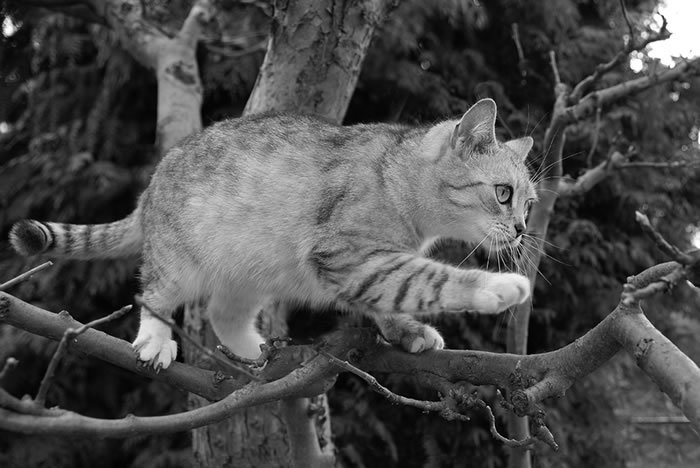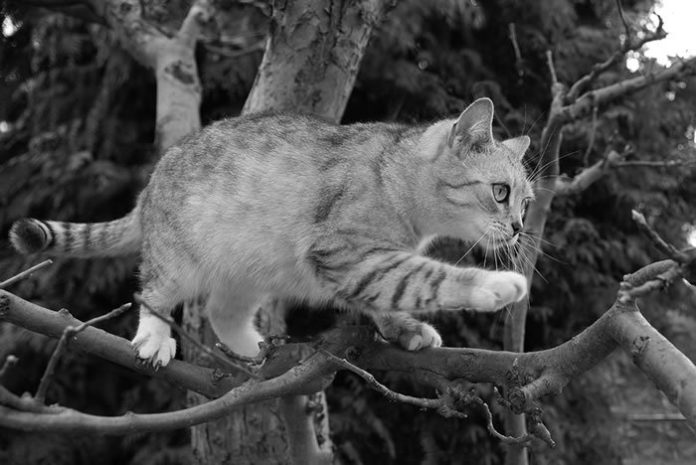You open the door for an unexpected visitor and your cat flees. Its frustrating for you, potentially dangerous for your escape artist – and a possible sign that its time to add stimulation to his daily life.
Cats adopted from a shelter may have been free roaming, with wide territories to explore, play and hide in. Now theyre confined at home to keep them safe from speeding cars and potential fights with stray cats and wildlife that can maim or kill, says Tracy Kroll, DVM, an animal behaviorist in Fair Lawn, N.J.
Longer Lives. We prevent their exposure to injury and disease, and possibly lengthen their lives. Its estimated that a cat allowed outdoors in the U.S. lives only one-quarter as long as an indoor cat, the ASPCA says, but at what price to him?
Bigstock

If youve ever heard a cat chatter at an outdoor bird through a closed window, it may sound beguiling, but hes actually exhibiting frustration, says Dr. Kroll, who completed her residency in animal behavior at Cornell University College of Veterinary Medicine. We under-stimulate our pets, and they must find their own interests and play behaviors. The outside is new and unknown territory. They are more likely to be curious enough to try to dash there.
Thwarting door dashers can entail more than blocking their avenues of escape. Heres how to boost stimulation to keep them safe and happy at home:
-Take the cats daily amount of kibble and divide it into six bowls around the house. That way, your cat forages for food, just as outdoor cats spend much of their time doing, Dr. Kroll says.
-Provide spaces overhead and below for your cat to hide, such as a cat tree and an empty shelf on a bookcase.
-Install a cat door to let your pet wander onto a screened-in porch to enjoy the sights and sounds of the outdoors. If you have a patio or deck, a catio, which looks like a tent made of mesh, is an option. Some owners push their cats around the neighborhood in mesh-fronted, enclosed pet strollers or teach them to walk on leash.
-Provide cat videos. The most popular ones show close-ups of birds and small rodents.
Still, There are some cats who plain and simple have wanderlust and want to go outside, Dr. Kroll says. For relentless door darters, the best bet is anticipation – knowing that theyre going to dash out when the front door opens and how youre going to respond.
Some strategies to consider:
– Special doors. When it came time to find a new home, Dr. Kroll intentionally sought one with a double-door entry – a front door, vestibule, then another door leading into the house. Now when a visitor knocks, she slips into the entryway and closes a door behind her to keep pets at bay.
– A baby gate or screen. If the cat jumps over it, youll have time to react. For example, the ASPCA suggests keeping a water spray bottle by the door to mist or spray him when he approaches the open door.
– Homespun remedies. If your cat hates the smell of lemons, rub lemon-scented cleaner or furniture polish around the door. Place double-sided sticky tape on placemats by it. Some owners spread aluminum foil over the walkway, though, Dr. Kroll says, My cat likes to play with it. I dont know that itd be that much of a deterrent.
Develop your own nontoxic, non-painful, non-harmful techniques. Dr. Kroll knows a fishermans wife who answers the door by holding a kitty-sized fishnet in front of her. The net catches her darting cat. Another owner booby-trapped a back door with water balloons to thwart her easily spooked pet. It sort of worked: No one in my family is talking to me, the woman told Dr. Kroll. They got splashed, too.
In the end, its not enough to assume that your cat will always stay indoors. All it may take is a pizza delivery, a fire or natural disaster to send him running. To increase the chances that he will be returned, make sure he has a microchip and collar with an ID tag.




